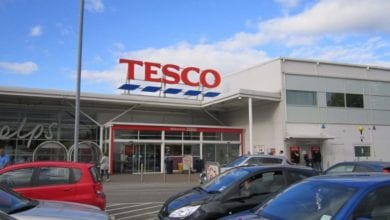Hard times on the high street

The widespread impact of digital is a daily reality, but few cases have been so apparent to the everyday consumer than the disruption of retail. This trend has contributed to familiar retail names like Toys R Us, BHS and HMV falling into the hands of administrators, at risk of joining once ‘too big to fail’ institutions like Woolworths, as famous high street obituaries.
Online and in-store need not be a binary choice, however, as the growth of digital technologies presents an opportunity for traditional retailers to reclaim their market position and create a customer experience that ties together every touchpoint.
The ‘death’ of touch and feel retail
As the number of empty premises along previously bustling shopping precincts continues to increase, the long-term outlook for brick-and-mortar retail appears bleak. The reasons for the decline are well documented; retailers are under intense pressure as shoppers buy more goods online at the expense of traditional weekend trips to the high street. Coupled with issues around long-term rent agreements, merging competitor sets and the agility of niche market disruptors such as Casper mattresses, Happy Socks and others, online-native retailers have a significant advantage over physical stores due to lower operating costs, greater choice and delivery models more in tune with busy modern lifestyles.
Moreover, once a consumer has shopped at their online store, the seeds have been sown for repeat purchase. The retailer has the individual’s email address in order to conduct email marketing campaigns, and they have useful data on that person’s shopping preferences. Even where the shopper hasn’t completed a purchase, browsing activity and abandoned shopping carts can provide the fuel to encourage renewed interest.
Brick-and-mortar’s digital advantage
Reports of the high street’s death, however, may be premature as more traditional retailers find their perceived vulnerability becomes their advantage. By placing renewed emphasis on their digital real estate, brick-and-mortar retailers are able to blend the relative benefits of the physical and virtual worlds to create a differentiated offering to customers. Their physical presence creates an opportunity for a direct, personable relationship, and the brand equity that exists in a high street name is still a strong differentiator against less familiar dot com-only retailers.
Traditional retailers are well aware of this opportunity and are now making more money from their online stores than ever before. John Lewis, for example, generates 37.4% of its £11.7bn annual sales revenue (approximately £4.3bn) through e-commerce, while Tesco’s online revenue has grown to £2.9bn. The blend of digital and in-store allows retailers to personalise the look and feel of their online stores, optimise customer experience based on their behaviours, maintain and enhance relationships via email or app notifications, and create appealing events and offers to attract shoppers to their stores.
Here’s how high street retailers can maintain their edge in the digital age:
Make advertising their advantage
The channels may have evolved, but the principles remain the same. Advertising works; it’s no coincidence that Amazon spends $8.2bn on marketing each year. It’s estimated that by 2022 around 80% of all marketing spend will be digital. The move from traditional media towards digital gives retailers the opportunity to be smarter with their spend, using a performance-led, programmatic approach to optimise their ads towards specific outcomes, and to put harder measurements in place.
Using these tools, retailers can direct shoppers both towards their online platforms and to their physical stores for special offers. For example, a retail brand may run a programmatic display campaign where they use online and offline data to target banner advertising to people in proximity of its stores, where they can then offer coupon redemption to encourage people in-store.
Think omnichannel
Consumer touchpoints do not act in isolation. Just as a consumer who engages with a retailer’s social media accounts may also be receptive to email communication, someone who shops on an online store may also enjoy visiting physical stores. Omnichannel retailing refers not only to covering every customer touchpoint – across physical locations, ecommerce, mobile applications and social media – but understanding their relationship and orchestrating them in a way that they work together to produce a better customer experience.
A retailer’s omnichannel strategy should therefore encompass all touchpoints, and seek to leverage the complementary elements of different channels to optimise customer experience. In practice, this could take the form of a brand enabling a shopper on their website to interact live with a shop floor assistant to ask questions and seek advice, or using beacon technology to offer in-store discount opportunities to shoppers through their smartphones.
Clothing retailer Next provides an example of omnichannel being used to strong effect. The company has invested in a strategy to more closely integrate its online and in-store businesses, which has so far proved effective with more than half of its online orders being picked up physically and 80% of returns being fulfilled over the counter.
Blend the online and offline worlds
Humans are innately social creatures, and our behaviours tend to move in cycles. A cycle towards greater digital immersion is commonly followed by a reaction move towards greater social interaction. Perceptible trends of ‘digital detoxing’, deleting social media apps and even reverting to analogue technologies such as vinyl are relevant examples of this. Brick-and-mortar retailers can use this reaction to their advantage, using digital as a means for enhancing the real-life experience rather than as an end in itself. To capture this sentiment, retailers should seek to use their digital experience to engage and entice customers towards a physical store visit by offering irreplicable events and interactions.
Invest in digital talent
In a digital-first environment, having the right talent provides a massive competitive advantage. Digital is an ever-evolving space and changes in platforms both new and existing create greater opportunities for user engagement. Having the right blend of creativity and technical skills can help retailers to devise more encompassing strategies and find the marketing tactics that produce the greatest returns.
Acquire digital IP
Change within large organisations is never easy. Transforming internal models and operations brings a range of risks and push-back. For traditional businesses seeking to expand their digital offering to customers, often the most expedient method is simply to acquire a high-performing digital business. Bringing their innovative approach and industry nous into the business injects new capabilities in a fraction of the time. This M&A fervour in the US retail space is evidenced by Walmart’s acquisition of Flipkart, and it’s likely we’ll see similar deals in the European market in 2019.
Fighting back
Against the headlines of doom and gloom, brick-and-mortar retail’s race is not yet run. While the power and pervasiveness of digital is inarguable, the physical realm still has a lot to offer. Customers enjoy the social element of high street shopping and the benefits of dealing with real people in store is yet to be replicated in the online world.
By investing in their online presence, and seeking to directly link online and offline experiences, retailers can gain a distinct advantage over digital-only competitors. It needs to be easy, connected and geared towards the consumer’s own preferences, producing richer experiences than can be achieved in the online realm alone.
We may live in a digital world, but the personal touch still matters.
John Gillan, managing director, Northern Europe, Criteo







